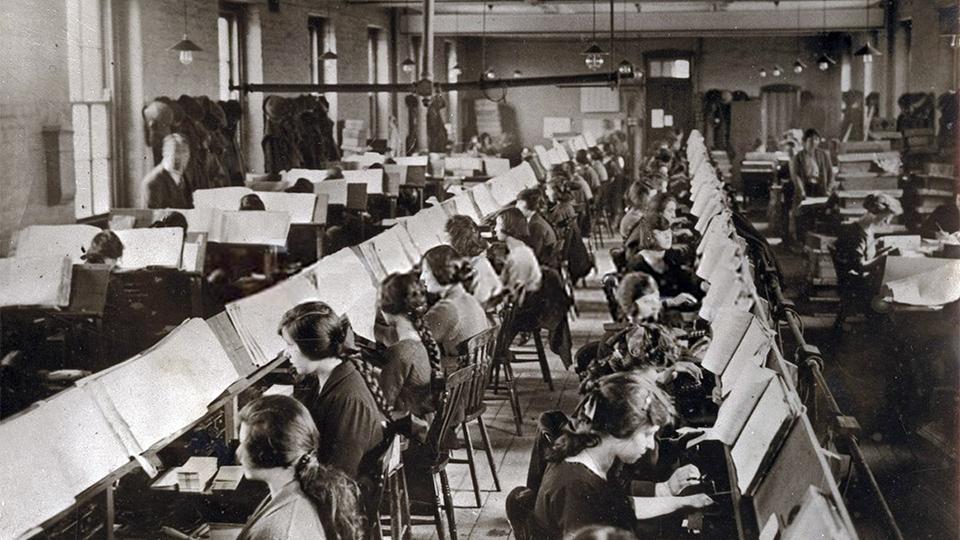Living Wage report shows economy is based on “Victorian workhouse”
Primary page content
A rise in the number of workers paid less than the “Living Wage” shows Britain’s economy is based on the “Victorian workhouse model of employment”, according to an expert at Goldsmiths, University of London.

New data from the Office for National Statistics shows (ONS) that nearly a quarter of jobs outside of London pay less than the benchmark suggested for an adequate standard of living.
Some 23 per cent of jobs outside the capital paid less than the living wage in 2014, compared with 19 per cent in London, the Office for National Statistics (ONS) said.
Dr Johnna Montgomerie, lecturer in economics and deputy director of the Political and Economic Research Centre, says this exposes a “fundamental problem” of the UK economy.
And she added that women are much worse off with some female-dominated employment sectors seeing up to 70 per cent of employees receiving less than the living wage.
The figure for the capital has increased by 6 per cent to 19 per cent - well below the rest of the UK.
The proportion of jobs paying less than the Living Wage outside London rose from 21 per cent to 23 per cent between April 2012 and April 2014.
The data showed there are more than six million jobs in the UK paying less than the current living wage – with more than half of these part-time.
Goldsmiths, University of London was among the first higher education organisations to sign up to the Living Wage pledge.
The voluntary rates of £7.85 an hour outside London and £9.15 in the capital are due to be uprated next month.
Around 200 firms have agreed to pay the national Living Wage in recent months, with more expected to sign up before a new rate is set next month.
There are now more than 1,800 accredited Living Wage employers, ranging from leading banks such as Barclays, RBS and HSBC to small organisations employing a handful of staff.
Responding to the research published on 12 October, Dr Montgomerie said:
“These figures show very clearly that the alleged return to growth celebrated by politicians was based on a renewing of the Victorian workhouse model of employment.
“In London, it took 6 years (2008 - 2014) for the Living Wage to increase by 3 per cent showing that even in London, the nation's economic powerhouse, growth does not translate into meaningful income gains for workers at the bottom-end. The story is worse for the squeezed-middle because median hourly pay for employees aged 18 and over in London fell by 10 per cent in real terms over the same period, it seems the return to sluggish growth comes from the wage squeeze on middle income groups.
“The ONS figures cast light on the fundamental problem of the UK economy, getting a job is no longer a route out of poverty or a path to greater financial stability.
"In April 2014 the proportion of jobs paying less than the Living Wage in London was 19 per cent; in the rest of the UK it was 23 per cent; the UK growth model is dependent on low-paid work for many and no-pay increase work for most.
“Workers are expected to fill the gap between income and expenditure with debt, as wages fail to keep pace with the cost-of-living debt is easier to get than a well-paid job. According to the Money Charity Statistics, in the same reporting period (April 2014) the average household debt in the UK (including mortgages) was £53,716 that is 111 per cent of average earnings; more importantly monthly household repayment of £2,008 that is the amount of income the average household must earn to service the debts they already have.
“As always gender-based pay discrimination means that women (and the children and families that depend on them) are much worse off in the UK economy. Last year almost a quarter (22 per cent) of female employees in London and almost a third (29 per cent) in the rest of the UK were paid less than the Living Wage; this is much worse than male employees where only 16 per cent in London and 18 per cent in the rest of the UK were paid less than the Living Wage.
"We can see this more clearly when we look at sectors with a predominantly female workforce: of accommodation and food services employees 65 per cent in London and 70 per cent in the rest of the UK are paid less than the Living Wage and retail services were an estimated 55 per cent of employee jobs in London and 59 per cent in the rest of the UK are paid less than the Living Wage.
“This reality is ignored by politicians seeking to push through welfare reform based on the faulty assumption that work actually pays - the figures show clearly that for many people work does not pay enough to survive. When combined with welfare reform that seeks to get women with children back to (low-paid) work sooner while also cutting care based subsidies like child-tax credits, children with disabilities allowance and housing benefit, women are the biggest losers in today's economy.
"Therefore, the 'women' problem that politicians face is not just the gender balance of the front benches it is the exploitation of women's low-paid work in the formal employment and unpaid work in the home by policy-makers that needs to be addressed.”